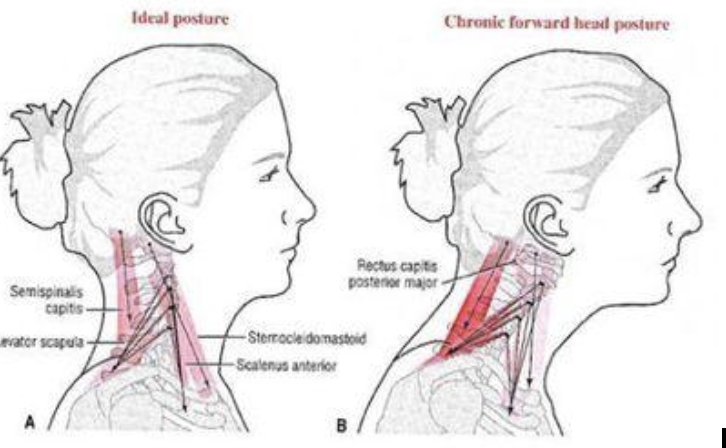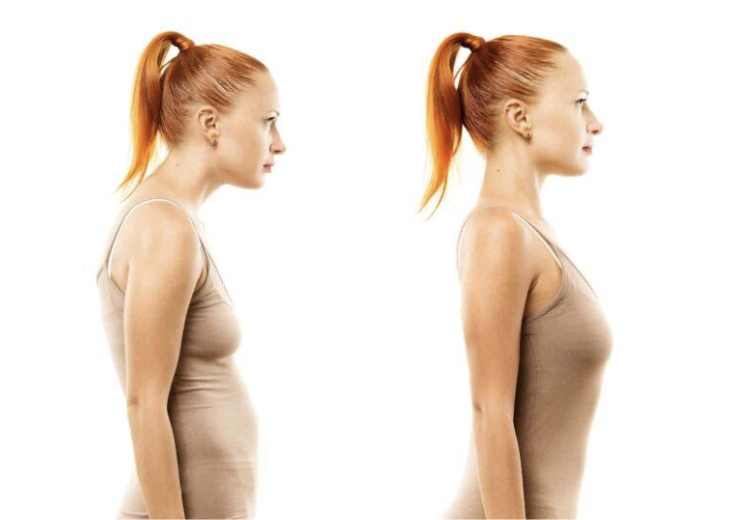By; Dr. Alan Hetherington/ Sports Injury Writer
If you have ever been caught slouching, your parents will tell you to sit straight with your shoulders back, but why does posture matter? It is important for the well being of your body, particularly if you play a sport. Your posture translates to your technique in sports. How you position your body matters whether it be for your golf swing, serving volleyball, swimming, or kicking a soccer ball. When you hang your head forward with a rounded back most of the day that is how your body will be prepared when you play sports.
Your body is not immediately prepared to play sports when you step on the field. Your body adapts to the positions you repeatedly put it in. When you slouch and sit at school all day, you are training your body to adapt to this position. It is easy to spend more time slouching than training for sports and can lead to developing poor movement patterns.
Your brain controls stability and movement from sensory information received through muscles and ligaments. Sitting in a poor posture overloads postural muscles and with long durations puts excess strain on joints and ligaments. Doing this repeatedly can cause compensation by the nervous system to control improper positioning. This can lead to muscle spasm and hyperactivity with overuse eventually developing improper firing of muscles and dysfunction. Performing a movement repeatedly will make you better but can create imbalance in muscular systems, altering joint stability and potentially leading to overuse injuries if unaddressed.
Common Postural IssuesAnterior head carriage is a common postural issue when the head is held forward from normal postural positioning. With normal posture the ear lobe should sit over the anterior one third of the shoulder joint. Many people have their head pushed forward. Most daily activities are in front of our bodies, such as driving, writing, more commonly these days, looking at a cell phone. If unopposed, gravity repetitively pulls the head forward and gradually shifts the head forward. Head posture feeds into the rest of your posture and effects performance of arm movements. To see for yourself, shift your head forward and back and see which position it is easier to raise your arms over your head.

Rounded shoulders are paired with anterior head carriage. They are common with repetitive forward motions. Overused muscle at the front of the shoulder such as Pectoralis major and minor get tight and pulls the shoulder blade into a protracted position. Muscles tighten, decreasing shoulder range of motion and putting the glenohumeral in an unstable internally rotated position. This can lead to clicking in the shoulder movement and potential impingement or rotator cuff injuries if left to linger. To see for yourself, try rounding your shoulder without letting your head drift forward. You will see that it is difficult unless you are intentional about holding your head back.

Anterior Pelvic Tilt is caused by tight hip flexors and low back muscles, weak abdominal and gluteal muscles. This tilts your pelvis forward like a bucket of water and can put more pressure through the low back. Without proper stability through the abdomen and pelvis, it is difficult to transmit force through the rest of your leg into the ground. Repetitive activities like running or kicking performed thousands of times can put more strain on the low back or hips if each time you stride you do not maintain an ideal posture or stabilize through the abdomen. To see for yourself, try running with braced and relaxed abdominal muscles and see which feels more efficient.

How do you fight against poor posture?
The modern human lifestyle is constantly pulling your body into positions that cause tension and stiffness in important function areas for sports. If you take days or weeks off from taking care of your mobility then your body will stay how it is used most often.
Postural Assessment
If you don’t know where to start, a postural assessment from a chiropractor is a good first step. It is difficult to be objective with your weaknesses. A chiropractor is training in proper position and function of joints and muscles. They can point out areas of concern and lead you in the right direction to combat postural issues to maximize your performance.
Mobility exercises
Performing regular mobility exercises and stretches. There are no days off, modern humans are stuck sitting too long, looking at phones, computers, doing repetitive activities that overuse body systems. If you do not consistently work on your mobility, you’ll put excessive stress on overused tissues until they causes issues. Just like good nutrition, sleep, and training, when you take weeks off you get worse.
Manual Therapy
If you have never taken care of your posture or mobility of your joints, a method chiropractors will use to restoring proper joint motion is spinal and extremity manipulation. Joints are meant to move through their full range of motion. If they are stiff with limited range of motion, it can impact other tissues. Ligaments will tighten to the restricted position and muscles work within a limited range of motion to become functionally short. Often times we identify with the dysfunction, “I just cannot move like that” when our bodies should be able to. Regular chiropractic manipulation, soft tissue therapy for tight muscles and individualized mobility exercises to address personal shortcomings can help limit recurrent issues for athletes. That is why most professional athletes seek preventative chiropractic care because to perform at a high level each functional unit of the body needs to work properly.
Your posture can be a reflection of how your body moves or how it does not move. With proper preparation and attention you stand to gain a great deal. It can improve you efficiency, prevent injury, deterioration over the season, and chronicity of injuries. If you do not know what it is like, then you do not know what you need to work on and you risk falling behind those that prepare.
Reference
Starrett, K., & Cordoza, G. Becoming a supple leopard: the ultimate guide to resolving pain, preventing injury, and optimizing athletic performance. 2015. Second edition, updated and expanded. Victory Belt Publishing Inc.
Panjabi MM. The stabilizing system of the spine. Part I. Function, dysfunction, adaptation, and enhancement. J Spinal Disord. 1992 Dec;5(4):383-9; discussion 397. doi: 10.1097/00002517-199212000-00001. PMID: 1490034.



